The race to qualify for the Rio Olympics once again dives into absurdity, as players like Anthony Ginting and Brice Leverdez pull off major upsets in team badminton events, then run up against a ranking point system that ensures they can’t get more than a fraction of what the best losers get.
By Don Hearn. Photos: Badmintonphoto
The latest standings have been released showing which of the world’s top badminton players are on track to qualify for the Rio Olympics. The February 25th numbers reflect the impact of the points ‘earned’ from last week’s continental team championships.
Why do I find it impossible not to put ‘earned’ in quotation marks? Well, what numbers like this week’s show us is that when it comes to the ranking points given to a player after a team event, how the player – or his/her team – performed is somewhere between nearly irrelevant and absolutely irrelevant.
Rewarding performance
Generally, when one looks at the points awarded from individual Badminton World Federation (BWF)-sanctioned ranking events, the results are pretty well what one would expect. The winner of a regular Superseries tournament gets 9,200 points, the runner-up gets 1,400 points less than that, semi-finalists get less still, and so on.
When the rankings get recalculated each week, there are sometimes unexpected changes which are more or less easily explained because they usually have to do with rankings being based on only a player’s ten best results in the past 12 months. Obviously, the BWF doesn’t want players resting on laurels bestowed for long-ago performances, nor does it want to reward players simply for turning in mediocre performances in twice as many tournaments as their competitors. So for example, when Lee Chong Wei became world #1 shortly after losing to Lin Dan in the 2008 Olympics, it seemed odd but behind it all, there was a logical explanation.
So far, everything makes sense. There are some who feel awarding points for first-round losses is unfair but others point out that the risk of getting zero money and zero ranking points is too severe for a sport with so many cash-strapped athletes. Not to mention that a ‘first’ round is often only reachable by winning a match or three on qualifying day and ought therefore to be recognized. Again, it’s not a perfect system but it seems to be governed by logic and fairness.
Then the results from a team event come in…
If you take a quick look at a random sample of players and their rewards for last week’s continental team championships, you might see some reasonable point totals and some mild surprises. Upon seeing the latter, without looking at the formula, you might just scratch your head and decide that it just must be more complicated than calculating the value of an individual tournament.
For example, you might see that Jan Jorgensen won over 8,000 points even though he lost his match in the final of last week’s European Men’s Team Championship but after all, his team won the title and he won 4 out of 5 matches. Then you might see that Carolina Marin won a whopping 9,430 points even though her team only reached the semi-finals. That might seem a little excessive but still, unlike Jorgensen, she did win all 5 of her matches.
Then you might take a look at Anna Thea Madsen (pictured). Her team won the tournament and she won all 5 of her matches, her best result being a win over the world #53 player and yet she got only a paltry 2,971 points. Granted, Marin beat a player ranked as high as #40 but still, how is it that she could get more than triple the points that Madsen got?
Finally, you get to those players who didn’t win a single match. The injured Ville Lang was in Kazan for less than a day and picked up 2,165 points for playing exactly one rally but again, this is very similar to what would happen to a player retiring from a first round match at an individual event.
Wang Zhengming, meanwhile, lost all 3 matches he played last week and he picked up over 5,000 points. The most handsomely rewarded losers were world #2 Greysia Polii / Nitya Krishinda Maheswari (pictured), who played exactly one match, lost it, but still picked up a tidy 7,259 points. At a Superseries event, you’d have to reach the final to top that. So just what on earth is going on here?
Sadly, this is not a case of someone at the BWF dropping the calculator in the pickle jar and thinking they scooped it out just in time. It turns out that it is written into the BWF rules that the points given to individuals for team event shall have almost nothing to do with their performance in the tournament.
Without reading the BWF regulations, the average person would likely assume that points from a team event would be based on something like an individual’s win/loss record, or perhaps their team’s final result, or perhaps maybe even the ranking of the opponents the player beat. Until you look at enough of the bizarre examples noted above, you might even assume it was some hopelessly complex calculation that attempts to combine two or more of the above criteria.
Instead, the single most important determinant of the ranking points awarded – under the official BWF regulations – are a player’s own ranking point total before they step on court in a team event. Win or lose, they are assured of their own existing ranking point total for the past year, divided by 10. Oh, and a winner also gets to keep 1/100 of the losing opponent’s prior ranking total, as a kind of cruel reminder of what they could have had under a point system that actually tried to reward performance.
In other words, Ville Lang got that small point total not because he lost or because he only played one point, or even because his team didn’t make it to the knockout round. He got 2,165 points only because he went into the tournament with a ranking total of 21,650. If he’d had Chen Long’s 96,931 points going in – all earned from ten other tournaments – he would have received 9,693 points for exactly the same single-rally performance in Kazan.
Perhaps the most absurd example in this collection of absurdities, are those where a scratch pairing, such as Tian Qing and Luo Ying, win their only match, get zero from their own ranking but still get the scraps for beating Jung/Shin, but the world #5 pair could walk away with ten times that number…for losing!
Even capitalism lets the ‘rich get richer’ adage evolve as an observation of reality. It generally isn’t coded into law! In judged ‘sports’ such as figure skating, fans often suspect that judges come in with certain biases, ensuring that no one before the final elite 12 skaters will get anything above a certain score. But if those biases exist, they are just inside judges’ heads. Where else but in badminton does anti-underdog bias get set down in the rule book?
Now this rant may be new but rule itself is not. It goes back at least to 2008 and possibly much earlier. It was brought up in the Malaysian press before the London Olympics four years ago but complaints about the point system were perhaps obscured by the criticism of China’s decision to play in the Thomas Cup qualifying tournament despite being automatically qualified, a separate issue entirely.
The same calculations were used for the Sudirman Cup last May. In fact, what this means is that most of the points that almost any player got from the Sudirman, which will count in their all-important quest for a qualifying spot for Rio, were based on performances from prior to the Olympic qualifying period.
What does this mean for Rio?
Whenever the rich get richer, the poor have to work twice as hard to catch up. Specifically, the doubles pairs already in the top 8 had an easier time of getting a point boost to help them stay there and that makes it harder for those just outside by trying to get in to secure a second ticket to Rio for their nation.
Perhaps the cruellest example involves winless Wang Zhengming, whose boost puts him into the top 16, crowding out one player who beat him in Hyderabad – Lee Dong Keun (pictured above) – and leaving another such victor with an extra rung to climb up to get there. Meanwhile, doing what Anthony Ginting (pictured top) did, beating three past Superseries finalists on consecutive days, usually involves a ranking point payout that would have had him knocking at the door of the top 16. Instead, the most consistent player on the strongest team in Asia could have better spent the week playing an International Challenge than going 6-for-6 for the winning team in India.
In North America, Lino Munoz beat Martin Giuffre, who beat Howard Shu (pictured), causing the Pan Am Championships to finish with Team Mexico, then Canada on top and the U.S. at the bottom but the points for those three players were in the opposite order. Munoz could well overcome that pitfall and still get a spot in Rio, but shouldn’t he have already reaped some benefit for him or his team playing well?
Of course, not all results from the continental team events were travesties of unfairness and nor will the vast majority have any bearing on the final qualifying lists for the Olympics. Players like Angga Pratama / Ricky Karanda Suwardi did play well and they did manage to inch closer to the top 8, where they have to be to qualify for Rio as a second Indonesian pair. Also, all three of China’s top pairs benefited from Hyderabad points but Tang Yuanting / Yu Yang (pictured below) happened to beat the world #2, and it is clear from their performances over the last few months that nothing is going to stop China from having 3 pairs in the top 8 by May. However, in every one of these cases, the successful pairs got as many points as they did mainly because they had a high ranking going in.
Necessity with and without her children
This point system reminds me of marathons in the past, where only elite runners were allowed to be near the starting line when the gun was fired. However, not only did the laws of physics and geometry create a perfectly logical reason for making slower runners cross the starting line later, but the problem was also solved several years ago with timing chip technology.
In badminton, too, obviously the BWF awards most of its points in the fairest method it can devise. There is no chance of them suddenly decreeing that the #1 ranked player should get 9,000 points for reaching the All England final but the #25 ranked player can get a maximum of 6,000 even if he/she manages to win the title.
However, until a better system can be devised for awarding points from team events, they’d be better off making the Best Dressed Awards a ranking event. At least there, a lower-level player has a mathematical chance of coming out on top.
![Rio Rankings – Underdog winners thrown table scraps The race to qualify for the Rio Olympics once again dives into absurdity, as players like Anthony Ginting and Brice Leverdez pull off major upsets in team badminton events, then […]](https://www.badzine.net/wp-content/uploads/ngg_featured/20150603_2130_indonesiaopen2015-rsal7258_rotator.jpg)
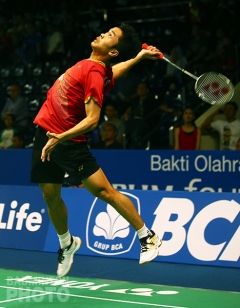

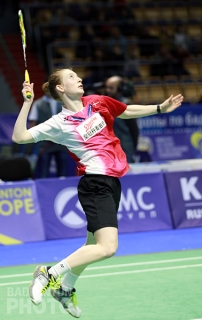
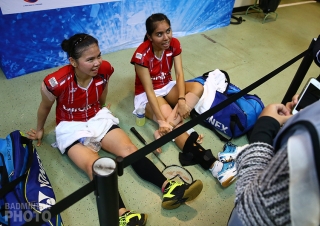
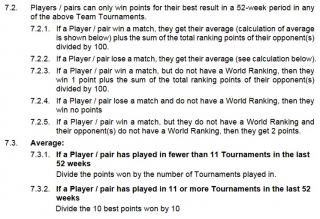
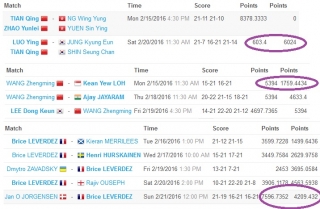
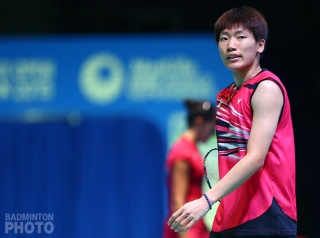
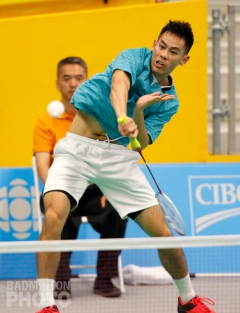

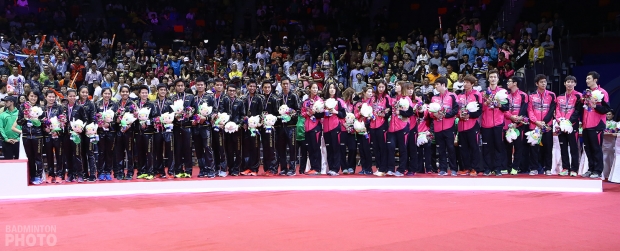

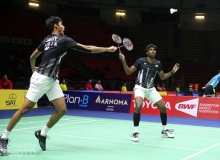

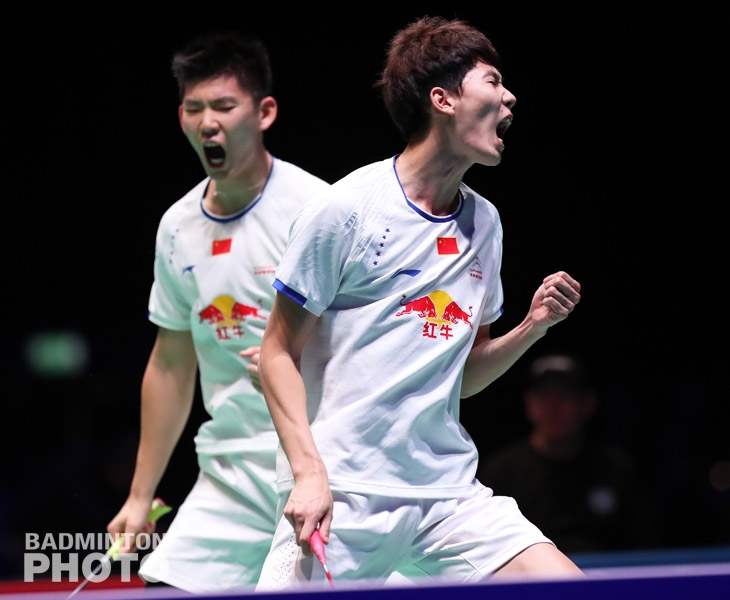


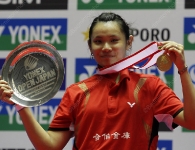
Leave a Reply